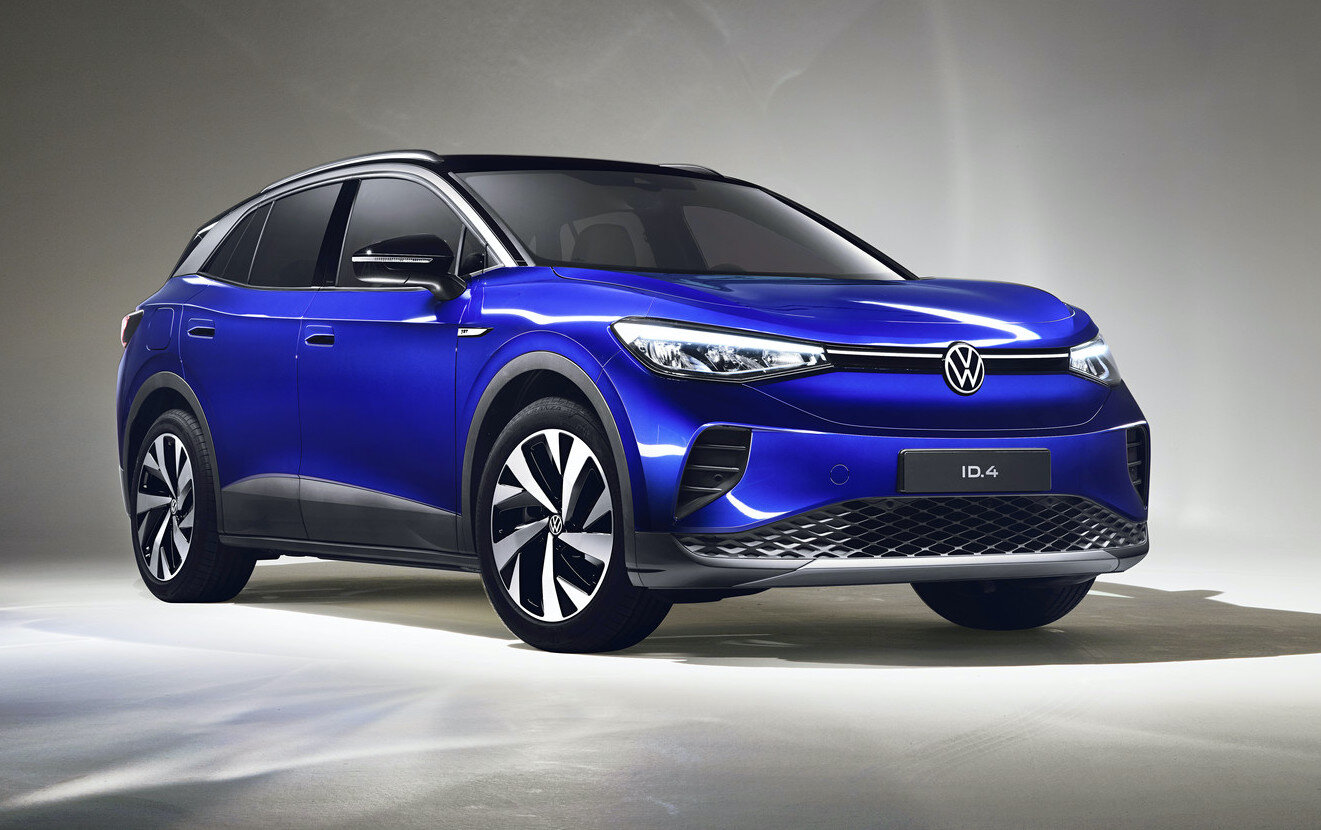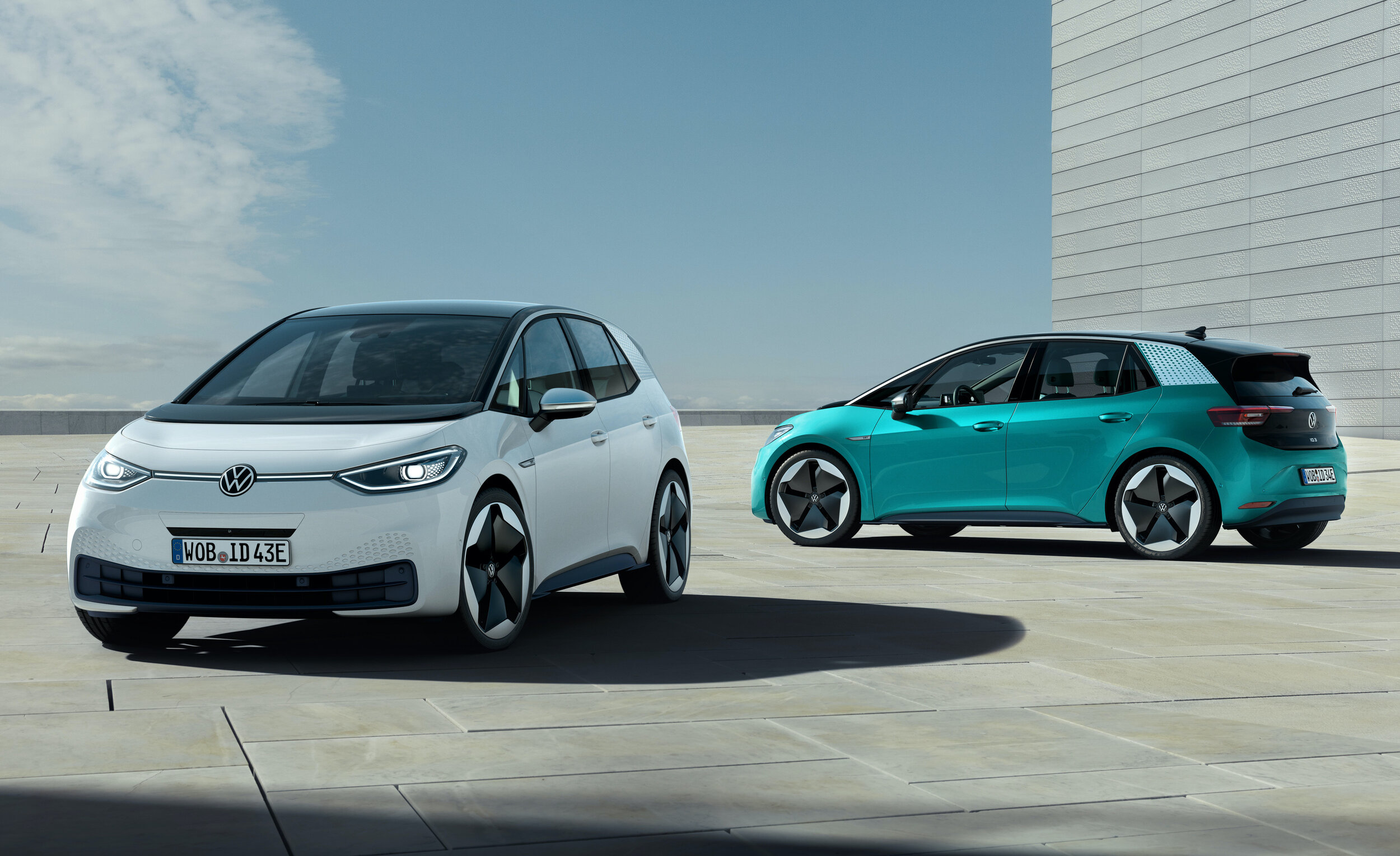No ID, no access - so VW going PHEV for a while
/Wolfsburg’s preference to push EVs into Europe and China means another fully electric replacement for the now-departing e-Golf mightn’t be seen for ages.
VW NZ prefers to kick off its ID electric car push with the ID.4, above, and has no plans for the ID.3 below. It’s a semantic, as no ID cars seem set to available here until late 2022 anyway.
E-GOLF supply will be exhausted by the end of the month and Volkswagen NZ will not have anything from the ID range until perhaps late 2022, so it’s increasing faith in another direction.
There’ll be intent to push plug-in hybrid fare; mainly in the mainstream – Mk 8 Golf here from the start of 2021 includes a PHEV and so does the Tiguan – but also with a performance flagship, the Touareg R.
When VW Group is now ratcheting up its electric vehicle roll-out and others in the family are playing their cards - Audi with an increasing e-tron penetration, Porsche with Taycan, Skoda NZ the Enyaq and SEAT the El-Born – it potentially galls that the parent’s own brand cannot present anything from the ID line locally for a while. A long while.
The ID.3 hatch is already well settled into European sale and is now starting right-hand drive production, including for the United Kingdom (the sourcing point for at least one grey import example), however that car has already been dismissed for NZ. VW NZ prefers the ID.4, a crossover.
No matter. Opportunity to secure any ID models for at least the next 20 months seems pretty much non-existent.
VW is prioritising production of its own fully electric cars for its home markets, so as to meet tough European Union emissions standards. In addition, it is putting a lot of focus into launching eight ID models into China by 2023. On top of this, the coronavirus pandemic is also having an effect, likely at multiple levels.
“Volkswagen Group is trying to provision as much of the European markets’ demand as they can,” says VW New Zealand boss Greg Leet, in explaining why “late 2022” is now the best bet for his own roll-out.
“There are CO2 targets that need to be achieved and that has been the factory’s first and foremost mission.”
Leet acknowledges that, with a Labour Government, potential for shift and progress on emissions standards here is also likely. That’s not unwelcome to his brand.
“We are really supportive of emissions standards and what they might look like in NZ. No doubt the new Government will be working through that and putting measures in place to encourage that. We’re talking with the factory about what that might look like.
“But we currently are not going to be looking to achieve launching that ID model until the back end of 2022.”
Why ID.4 over ID.3? “ID.4 is the model that is subject to discussion with us at the moment … we see it as the greatest opportunity. It’s an SUV orientated car for a start.”
Frustrating this is stretching out? Sure. But it’s life and, so, VW NZ has shifted immediate focus to a PHEV.
“We are in discussion … there are couple of options, a few different options. None by any means are guaranteed yet, but we are in discussion.”
Golf GTE is being considered.
The generation eight Golf, which launches in February in two mainstream petrol formats, followed by a GTI a month later and a Golf R in the last quarter of 2021, is also engineered as a PHEV, the GTE, whose sporty orientation does hold appeal.
Then again, the brand might prefer to leverage battery-assisted, mains-replenished drive potentials with a sports utility, as this product type is now to dominant choice with Kiwi new car buyers anyway.
The medium-sized Tiguan could be that car. The NZ line is selling more strongly than the Golf and this penetration is set to improve all the more when a new flagship, the performance-oriented Tiguan R (pure petrol, rather tha PHEV, like its Touareg big brother), comes in late 2021.
In July, VW Germany announced intent to add a Tiguan PHEV, as part of a facelift process.
While the Golf 8 PHEV is being offered in two versions with 150kW and 180kW system power, the Tiguan eHybrid will only be offered with the more powerful 180 kW PHEV.
The variant has a 1.4-litre petrol engine producing 115kW and the electric motor making 85kW. The 13 kWh battery will provide a range of 50 kilometres, as measured by the WLTP standard.
The plug-in hybrid is only available with front-wheel drive, but not in the four-wheel-drive version. The PHEV is also only to be offered in the standard Tiguan, but not in the slightly longer all-wheel-drive version.
Leet would not be drawn on talking about his preferences, but said PHEV technology provides a good opportunity for the brand here.
Just securing Golf 8 is very much a relief; the original, pre-Covid timeline would have had that car snugly established by now.
“It’s no secret that, as with manufacturers, Covid has thrown a spanner in the works,” Leet says.
He says the parent has done a magnificent job, not just re-establishing production rates since emerging from a lock-down in March but also having to basically start afresh with prioritising the order of individual market provision.
Some places that were doing well before Covid had not recovered; others – NZ included – had come back very strongly and were going gang-busters.
“We’ve been a little bit hamstrung with product being available having to feed in really big markets,” Leet says.
local e-Golf supply will be exhausted by the end of the month. The car went out of production in March.
“While it’s easy to think that a country needing maybe just a few hundred cars (and that’s NZ) won’t make a big difference in the overall picture, what I’ve learned in the last few months is that single cars have become as important to the manufacturer, in regard to where they place, as the 100s or 1000s have in the past.”
Leet says the resurgent private buyer interest in new cars is great for VW NZ; while the passenger car market in total ins down 23 percent, that’s simply a reflection of the rental car market, which VW barely feeds, having stopped.
“We’re still flying. Our market shares have increased and where we have had product, we are selling more of it.” The demand for all the SUV models has been extremely high; in October it registered more than 80 Touaregs, an unprecedented monthly return. It now expects stock levels to be tight until new the arrivals land early 2021. “We are simply running out of stock.”
There’s been no need for a runout of Golf 7.5; supply will be exhausted before Golf 8 comes, initially in Life and R-Line formats. Full spec and price have yet to be released. Byt these will both run the 110kW engine. The GTi is taking the 180kW 2.0-litre engine and provision here with the seven-speed DSG and electronic differential lock that for now restricts to the TCR, based on the outgoing car. In respect to GTI, don’t hold out hope for the new hotshot Clubsport recently revealed in Europe, as TCR replacement. It’s not available to NZ.
“It’s not a trainsmash for us is not having that car.”




















